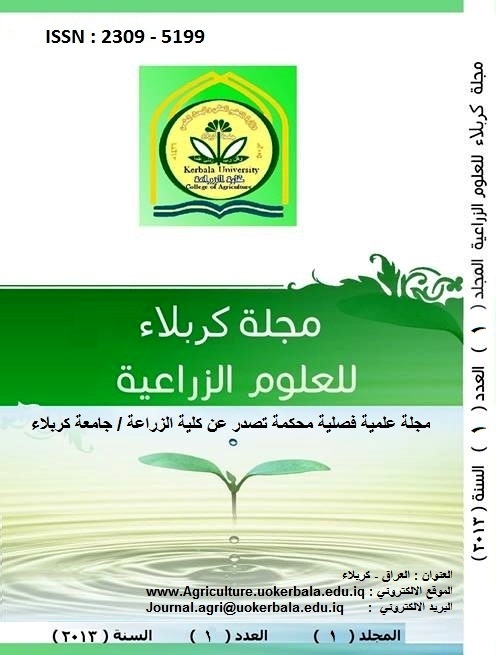Use of Pollen Supplements and Substitutes in Feeding of Honey Bee colonies, Apis mellifera L. During Summer Season
DOI:
https://doi.org/10.59658/jkas.v1i1.339Keywords:
Honey bees, Pollen Supplements and AlternativesAbstract
Abstract
The study aimed to find out the efficiency of protein mixtures used as supplements and alternatives to pollen on the activity of honey bee colonies in Hartha / Basra for the period from 15/5/2011 until 30/7/2011 The mixtures are: a mixture of pollen count with milk powder, lentil mixture and yeast bread, lentils and mix egg whites, mix lentils and mushrooms, paste nictapol commercial and mixed pollen papyrus.
The results showed the highest area of the brood sealed when mixed pollen with milk sorting reaching 12124.4 cm 2, followed by treatment of pulp Alnictapol, which amounted to an area of 11,650 cm 2 and a difference of legal entity from the rest of the transaction, and the smallest area was when Mix pollen papyrus, amounting to 8958 cm 2.
For pollen mixture showed higher paste Alnictapol area was 1236.3 cm 2 and less space when you mix the pollen grains of papyrus, which amounted to 904.1 cm 2, as there have been no significant differences between all the transactions in the area of pollen.
At the level of honey production has the highest weight was 4100 g when mixed with milk, pollen count and significant difference from the rest of the transaction, and the smallest weight of the mixture when the pollen and the papyrus of 2889 g.
The results of food preference than transactions with the pollen count milk powder as well as a paste Alnictapol trade reaching 100% in each treatment were mixed lentil and mushroom less favorable than the rest of the transaction amounted to 72.5%.
Also given transaction mix pollen with milk screening dried, a paste nictapol commercial correlated significantly with the production of brood sealed and pollen and the amount of honey, and for the treatment of mixed lentils, yeast bread was their link moral with the production of brood and honey, as he was positive with the rest of the transactions at all levels of production of brood sealed and the amount of pollen and honey.
The analysis of the basic components of the pollen collected by worker honey bees from protein and fats and sugars, ash and moisture percentages were 18.32%, 3.136%, 33.633%, 0.960%, 43.95%, respectively
Downloads
Published
How to Cite
Issue
Section
License
Copyright (c) 2013 Copyright (c) 2024 is the Author's article. Published by the Journal of Kerbala for Agricultural Sciences under a CC BY 4.0 license

This work is licensed under a Creative Commons Attribution 4.0 International License.
Licensing Terms
All articles are published under a Creative Commons License and will be directed to the Creative Commons Attribution 4.0 International License (CC BY 4.0) That permits use, distribution, and reproduction in any medium, provided the original work is properly cited. This license also allows the work to be used for commercial purposes.
Use by both non-commercial and commercial users
This content is licensed under a Creative Commons Attribution 4.0 International (CC BY 4.0) license, permitting use by both non-commercial and commercial users. Individual users may access, download, copy, display, and redistribute the articles to colleagues, as well as adapt, translate, and text- and data-mine the content, subject to the following conditions:
- The author's moral rights, including the right of attribution and the right to protect their work from derogatory treatment, are respected.
- Where content in the article is identified as belonging to a third party, users must ensure that any reuse complies with the copyright policies of the owner of that content.
- If the article content is reused for research or educational purposes, users should maintain a link to the appropriate bibliographic citation, including the DOI and a link to the published version on the journal's website.

